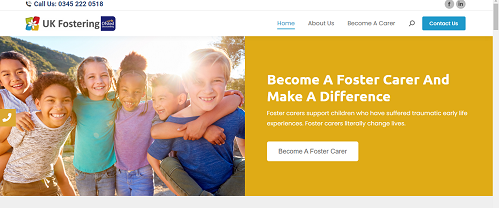
Short-term placements can last as little as one night for emergency placement and as long as two years. The child in care will reside with you for the legal proceedings, which typically last between 25 and 26 weeks. The child’s long-term plans will be confirmed here; in these situations, the decision to move on to a long-term fostering arrangement or return to their birth family is frequently made.
Short-term foster care, also known as temporary fostering, is typically the initial plan for most foster children. The primary purpose of short-term foster care for young children is to provide the child with support while care proceedings or care hearings are being held to determine the young person’s future.
The term “long-term foster care” does not solely refer to the length of time a child is in care; instead, it refers to the kind of care plan the child is on. In most cases, long-term foster placements require the child to remain in a specific fostering placement until they become adults and leave care.
Because it provides young people who are unlikely to return to their families with a more permanent consistency, this type of foster care is also known as permanent fostering. They are no longer in the care system and can care for themselves once they reach adulthood.
No matter what kind of foster care you choose, it will undoubtedly have a significant impact on a young person’s life and can also be very rewarding. However, it is essential to acknowledge that your current family will be affected by either long-term or short-term fostering.
Choosing to foster for a short period can frequently result in family discord and inconsistent placements. On the other hand, foster parents often prefer short-term fostering because it allows them to change a young person’s future without committing to long-term care.
Long-term foster carers aim to find a home for a child who will often be in their care for years. Since most placements are short-term, there is currently a national shortage of long-term foster carers. As a result, long-term foster carers are encouraged to apply to change a young person’s future.
There are a few similarities between long-term fostering and adoption: both aim to provide children and young people in care with a stable and secure environment. In contrast to short-term fostering, long-term foster care may mean that the young person’s birth family will not be reunited. You might foster a young person until they reach adulthood because long-term foster placements can last for years.
By adopting a child, you choose to raise the child on your own, without the assistance of a fostering agency and become the child’s legal parents. Adoption is the process of removing a child from the foster system. In contrast to fostering, adopting entails additional requirements, including paying for the adoption yourself, which can cost more than £4,000. When you adopt a child, it is solely your responsibility to raise them as if they were a member of your own birth family. Fostering comes with the support of a team of experts.
Fostering for a short period can last as little as one night, as long as several months, or as long as two years. It all depends on the child and their family’s circumstances. The child may then be adopted, returned to their own family, or placed in foster care for extended periods.
Short-term foster parents typically have more contact with the children’s birth families during assessments than with other types of foster care. They may also introduce the children to their new adoptive families.
UK Fostering is an independent fostering agency founded by professionals dedicated to improving children’s lives. Our goal is to provide foster care that is fully qualified, compassionate, and competent when children and authorities need it most. Authorities utilize our fostering services in London and the South East, the Midlands, the North West, and the North East of England. Local governments frequently discover that the number of children needing foster homes exceeds the number of foster parents available. We address this problem by providing children access to welcoming foster families through various placement options, including urgent and long-term foster care.

